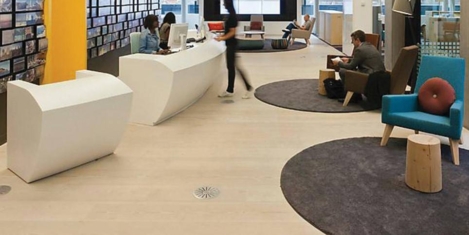September 25, 2018
Nearly a third of UK workers favour fines for companies who breach ethics
 Almost two thirds (64 percent) of SME employees believe that companies should make a positive contribution to society, while half of all UK workers (50 percent) would be discouraged from working for an organisation with no interest in community or ethical goals. According to The Future Workforce from Unum and independent researcher The Future Laboratory this emphasis on a company’s ethical credentials comes in the wake of a movement towards greater awareness of global issues, which has led to demands for more transparency in how organisations do business and less tolerance of unethical corporate behaviour. As a result, an ethical employer can be an important factor when it comes to deciding whether to join or stay with an organisation –In addition, The Future Workforce report found that just under a third (30 percent) of UK workers believe that companies who are not participating in any civic or ethical contributions should be fined.
Almost two thirds (64 percent) of SME employees believe that companies should make a positive contribution to society, while half of all UK workers (50 percent) would be discouraged from working for an organisation with no interest in community or ethical goals. According to The Future Workforce from Unum and independent researcher The Future Laboratory this emphasis on a company’s ethical credentials comes in the wake of a movement towards greater awareness of global issues, which has led to demands for more transparency in how organisations do business and less tolerance of unethical corporate behaviour. As a result, an ethical employer can be an important factor when it comes to deciding whether to join or stay with an organisation –In addition, The Future Workforce report found that just under a third (30 percent) of UK workers believe that companies who are not participating in any civic or ethical contributions should be fined.








 Banking and finance companies within the FTSE 100 have increased gender and ethnic diversity at board level, but there remains a question over whether minorities can break through the glass ceiling, as many of the top roles in banking and finance companies (Chair, CEO & CFO) remain a closed shop for ethnic minority and female leaders. This is according to a new study from Green Park which claims the leadership pipeline, supplying the highest tier of management in FTSE 100 banking and finance companies, now features the highest level of ethnic minority talent in four years, including 15 percent of professionals with a non-white background compared with 5 percent of leadership pipelines for FTSE 100 companies overall and 6.5 percent in 2014. The banking and finance sector has also met the target set by Lord Davies that 25 percent of board members should be female. However, this has been updated by the Hampton-Alexander Review to a target of 33 percent by 2020, which suggests that banking and finance companies will still need to do more to increase the proportion of female leaders in their leadership pipelines.
Banking and finance companies within the FTSE 100 have increased gender and ethnic diversity at board level, but there remains a question over whether minorities can break through the glass ceiling, as many of the top roles in banking and finance companies (Chair, CEO & CFO) remain a closed shop for ethnic minority and female leaders. This is according to a new study from Green Park which claims the leadership pipeline, supplying the highest tier of management in FTSE 100 banking and finance companies, now features the highest level of ethnic minority talent in four years, including 15 percent of professionals with a non-white background compared with 5 percent of leadership pipelines for FTSE 100 companies overall and 6.5 percent in 2014. The banking and finance sector has also met the target set by Lord Davies that 25 percent of board members should be female. However, this has been updated by the Hampton-Alexander Review to a target of 33 percent by 2020, which suggests that banking and finance companies will still need to do more to increase the proportion of female leaders in their leadership pipelines.







 In years gone by, a ‘one size fits all’ approach to office design might have been the norm, but as the decades have progressed, so too have the options available to businesses designing ‘homes from home’ for their office-based workforces. As new interpretations of the office environment proliferated, so the open plan model came to into being and eventually evolved into the default office design model. This initially brought greater variety than ever before but, ultimately, a one size fits all mentality in
In years gone by, a ‘one size fits all’ approach to office design might have been the norm, but as the decades have progressed, so too have the options available to businesses designing ‘homes from home’ for their office-based workforces. As new interpretations of the office environment proliferated, so the open plan model came to into being and eventually evolved into the default office design model. This initially brought greater variety than ever before but, ultimately, a one size fits all mentality in 



















April 9, 2018
How the UK car industry is driving the future of workplace design
by Paul Dunn • Comment, Workplace design
More →